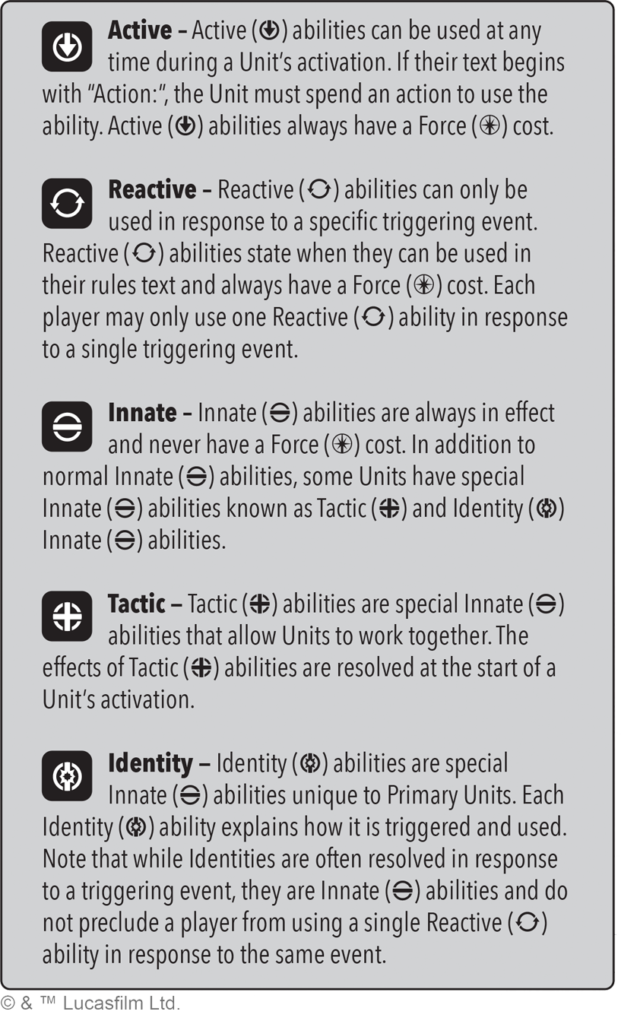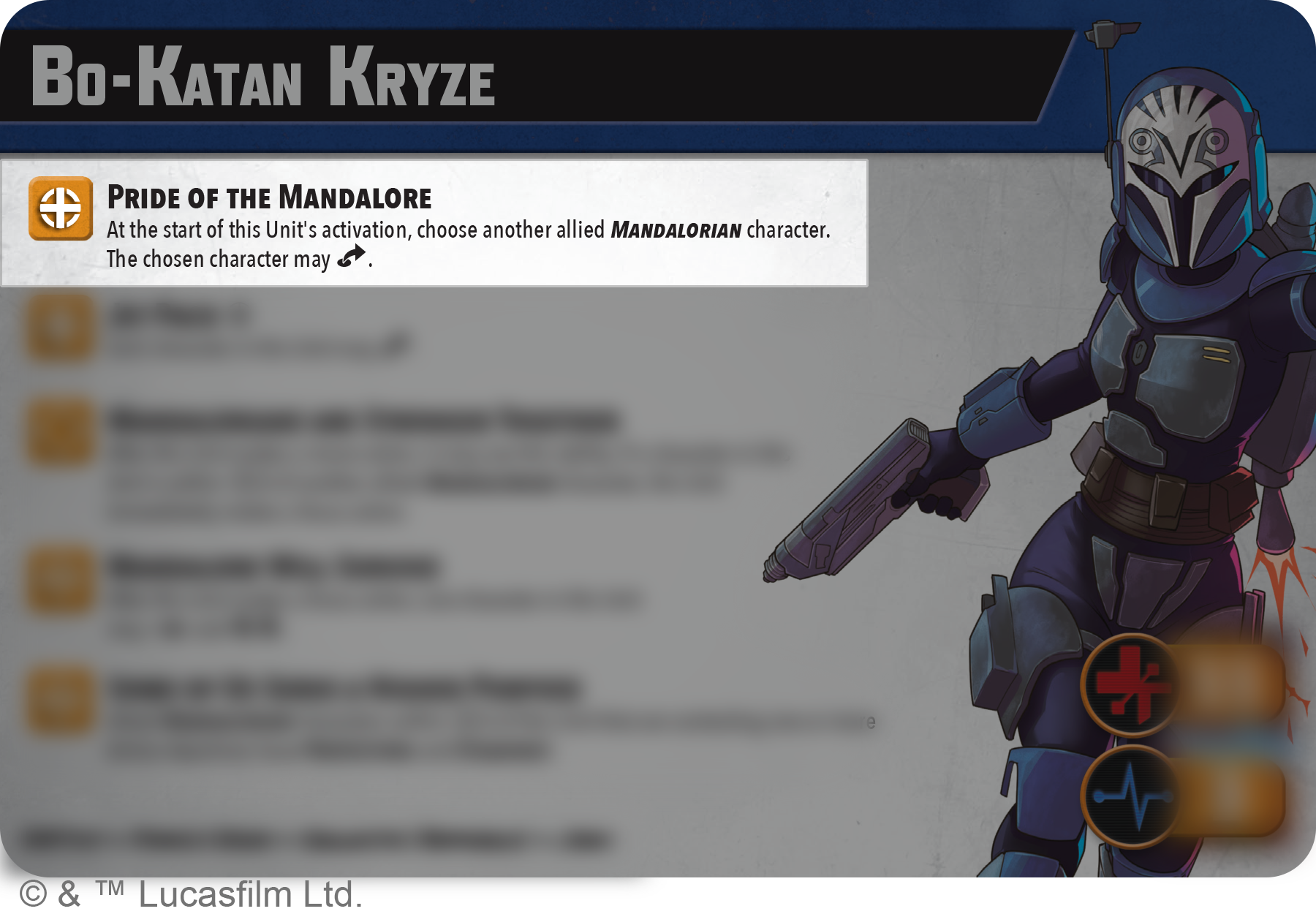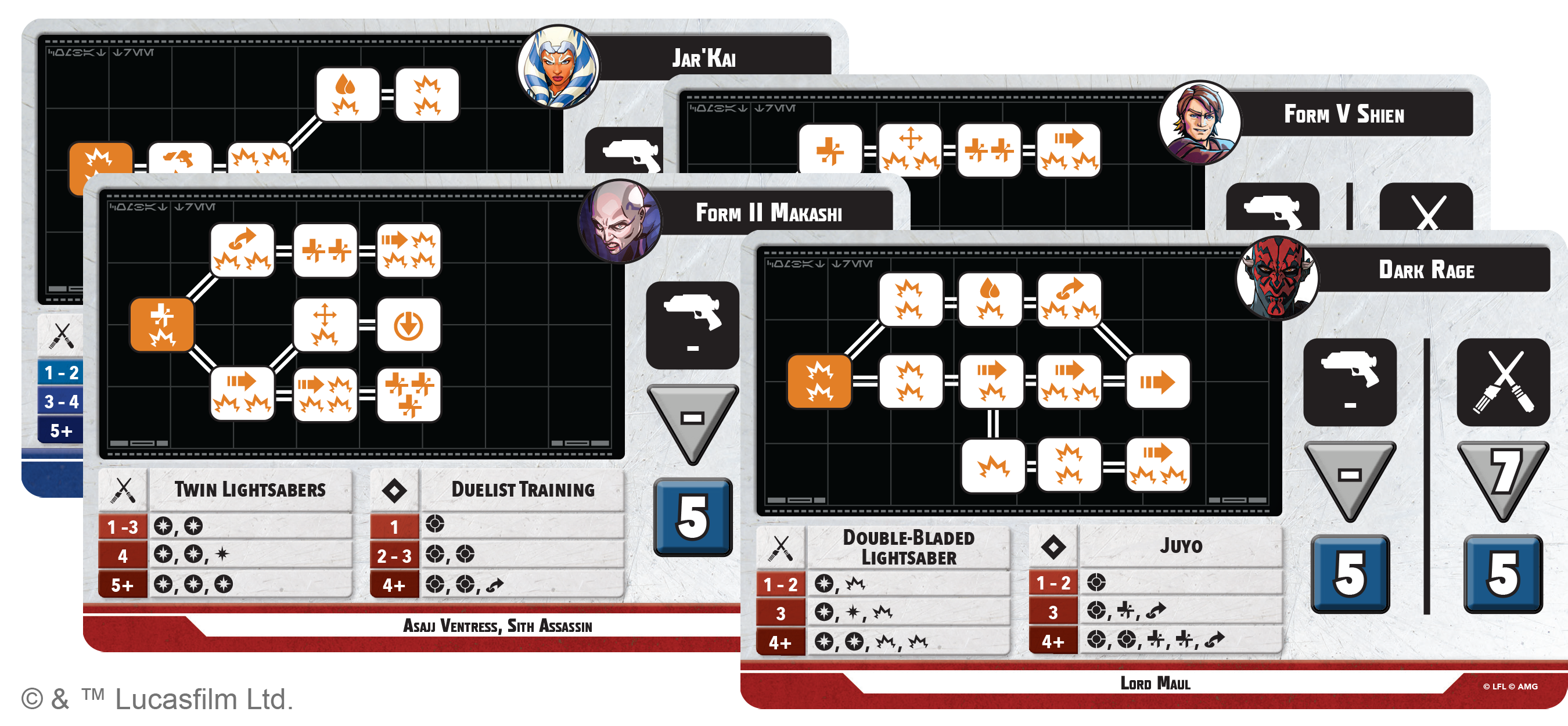STAR WARS: Shatterpoint Stat Card Overview
04/06/2023Welcome back to the latest transmission in our multi-article series looking at the gameplay and core mechanics of Atomic Mass Games’ newest miniatures game, Star Wars™: Shatterpoint! In this transmission we are going to be diving into how the iconic characters of a galaxy far, far away are brought to life in game through their Stat Cards.
Every miniature in Star Wars: Shatterpoint has a corresponding Stat Card. The Stat Card details all of the Unit’s important game information. This includes basic things like its name, Tags, type, and points cost. More importantly for gameplay, however, a Unit’s Stat Card includes a list of the Unit’s special abilities and the stats used to determine how much damage it can suffer before being Wounded or Defeated.
On the General Anakin Skywalker card below, his list of abilities fills most of the card, with his Tags at the bottom of the card and his Stamina and Durability listed at the bottom right. A Unit’s Stamina determines how much damage it can suffer before becoming Wounded. However, being Wounded doesn’t mean the character is out of the fight. A Unit is only Defeated and removed from the battlefield if it finishes an activation and has a number of Wounds equal to or greater than its Durability. So it takes 11 damage to Wound Anakin based on his Stamina value of 11, and three or more Wounds to Defeat him based on his Durability of 3.

Abilities in Shatterpoint are divided into several types. The type of ability determines when it can be used. Here’s a list and description of each ability type in Shatterpoint.

Using this as a guide we can see that Anakin has 1 Active ability, 2 Reactive abilities, and 1 Identity since he is a Primary Unit. The cost to use Force Jump is 1, I’m Going to End This is 2, and Deflect is 0. Per the rules for Identity abilities, Anakin never has to spend Force to use his This Is Where The Fun Begins ability.
However, remember those Wound tokens we talked about earlier? They don’t just matter for determining when a Unit is defeated. For each Wound token a Unit has the cost of its Active and Reactive abilities increases by 1 Force. So, Anakin with 1 Wound token would have to spend 2 Force to use Force Jump and 1 Force to use Deflect. Wounding enemy units not only helps you win victories it also can significantly slow them down as their abilities become more and more of a drain on your opponent’s limited Force Pool.
Before we talk about the second piece of the Unit rule puzzle in Shatterpoint, it is worth spending a little bit of time talking about Tactic abilities. Tactics are perhaps the most powerful abilities available to players as they almost always allow the Unit that has them to provide bonuses to allied Units in their strike team.
Take for instance the Tactic ability Pride of the Mandalore, found on both Gar Saxon and Bo-Katan Kryze.

This tactic allows Bo-Katan or Gar Saxon to add some incredible out of activation mobility to their allied Mandalorians. More than any other ability type, Tactics are almost always tied to specific Tags in order for a Unit or character to be able to be affected by them. When building their Squads and strike teams, players will want to keep a close eye on the various Tactics their Units have and the Tags associated with them, if they want their strike team to be able to best utilize their powerful effects to the fullest.
How individuals in Star Wars approach combat is as important to their character as their personality or background. Since the original lightsaber duel between Obi-Wan Kenobi and Darth Vader in Episode IV A New Hope, the combat in Star Wars has been a major element of storytelling in a galaxy far, far away. In Shatterpoint, each Unit fights with its own very unique style, offering players a wide range of options and tactical choices when resolving combat.
Shatterpoint’s combat resolution mechanics are so key to the game that they will be the focus of a whole upcoming article where we will dive into the system that brings the action and dynamic action of Star Wars duels and blaster fights to the tabletop like never before. Suffice to say here, that in addition to the Unit’s Stat Card, each Unit also has an additional card called a Stance Card. Stance Cards list all of a Unit’s attacks, defenses, and Combat Tree (much more on that later). Some Unit’s Stance Cards, typically Primary Units, are double-sided and can be flipped back and forth between the different fighting styles. This adds another element of tactical choice and personalization to the main characters of each squad.

That’s all for today’s transmission. Be sure to watch for our next installment when we take a closer look at how Stance Cards and attacks work together to create the dynamic and animated action of Shatterpoint combat. Pre-order your copy of the Star Wars: Shatterpoint Core Set at your local game store or through the webstore today!